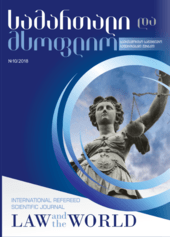THE HATE SPEECH DILEMMA: WHERE IS THE LIMIT BETWEEN PROTECTED AND PROHIBITED EXPRESSION? 
##plugins.themes.bootstrap3.article.main##
Abstract
Freedom of expression requires states to guarantee to all people the freedom to seek, receive or impart information or ideas of any kind, regardless of frontiers, through any media of a person’s choice. The right to freedom of expression is not an absolute right, and, under certain exceptional circumstances, the state may restrict the right under international human rights law. Hate speech, as a form of discriminatory expression, is a serious human rights concern. It is a tool often used to silence and intimidate minorities and to scapegoat whole groups in society while stifling dissent. Whether promulgated by politicians or spread by media outlets or online, the “hate speech” can create environments conducive to violence and other human rights violations against minority groups. No universally accepted definition of the term “hate speech” exists despite its frequent usage. Hate speech covers comments which are necessarily directed against a person or a particular group of persons. The term implies any expression imparting opinions or ideas – bringing an internal opinion or idea to an external audience. It can take many forms: written, non-verbal, visual or artistic and may be disseminated through any media, including internet, print, radio, or television.


